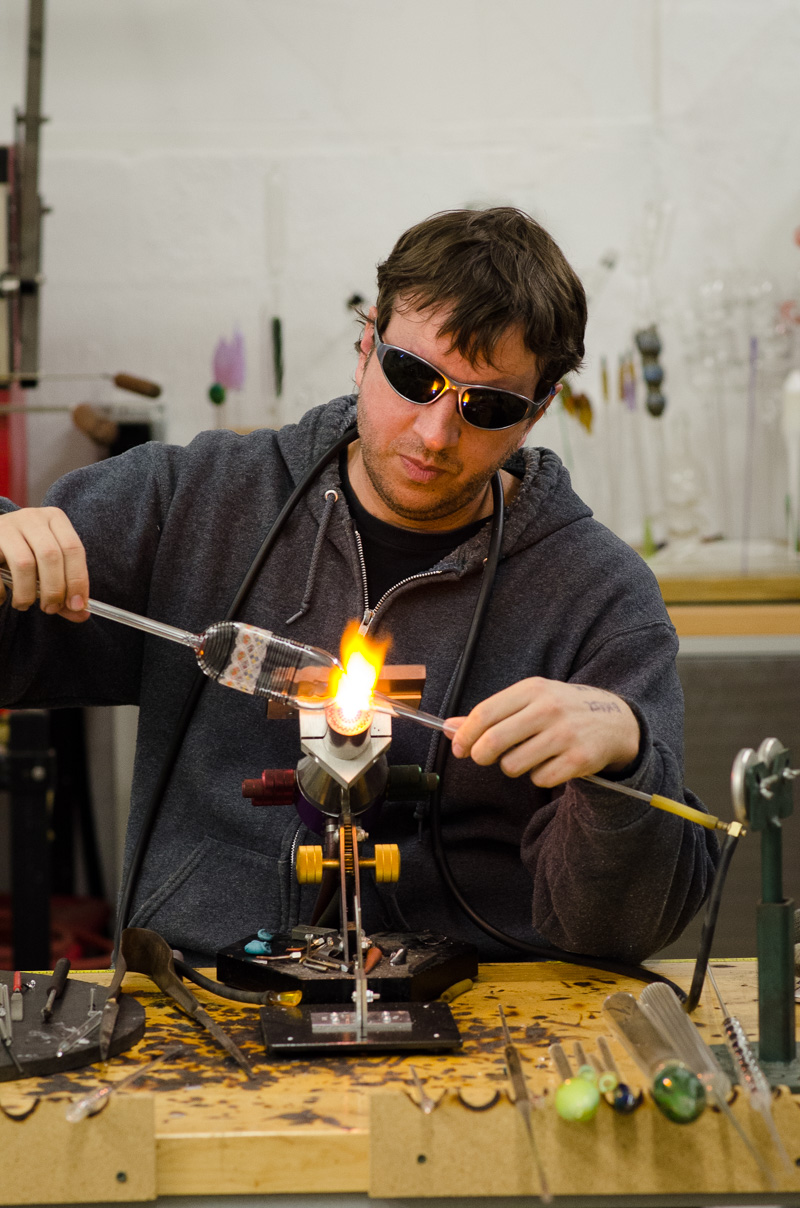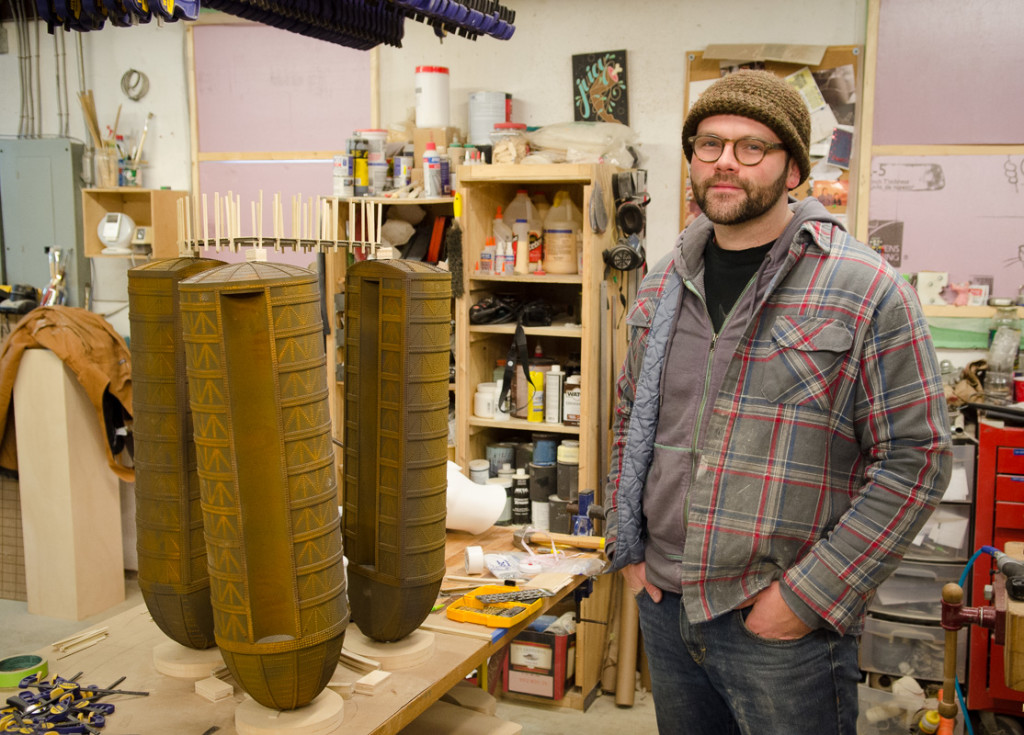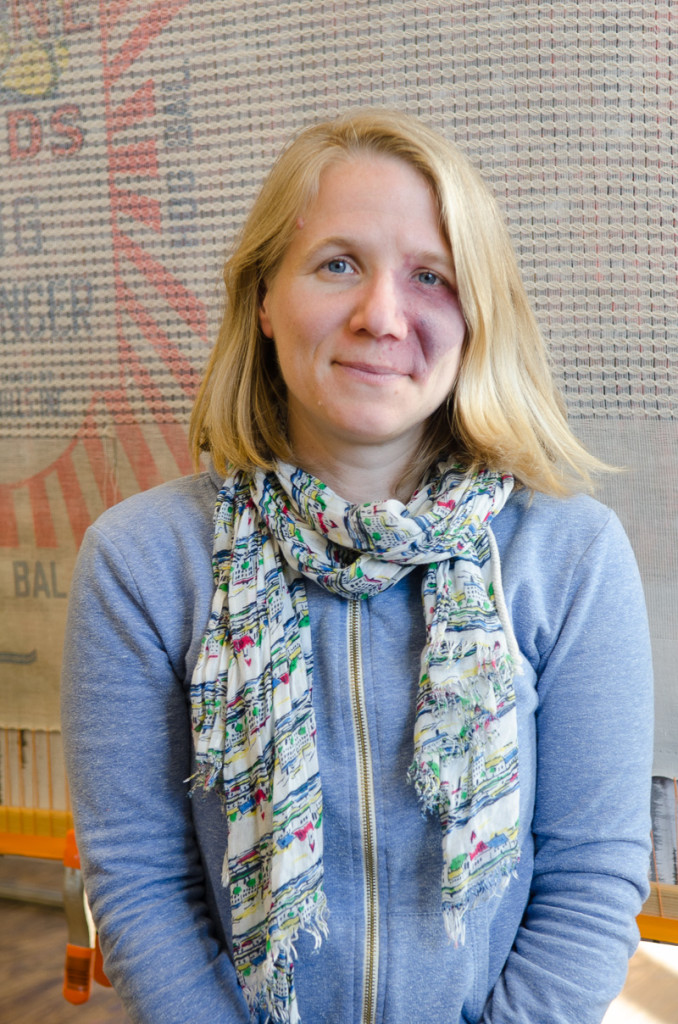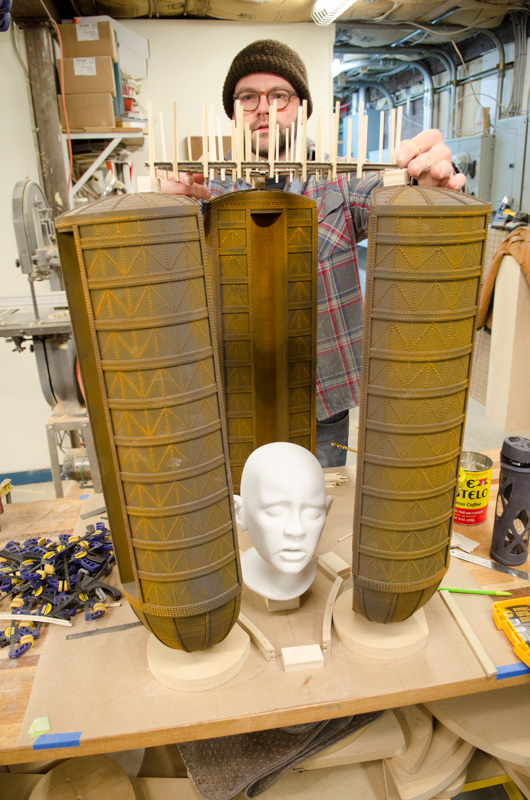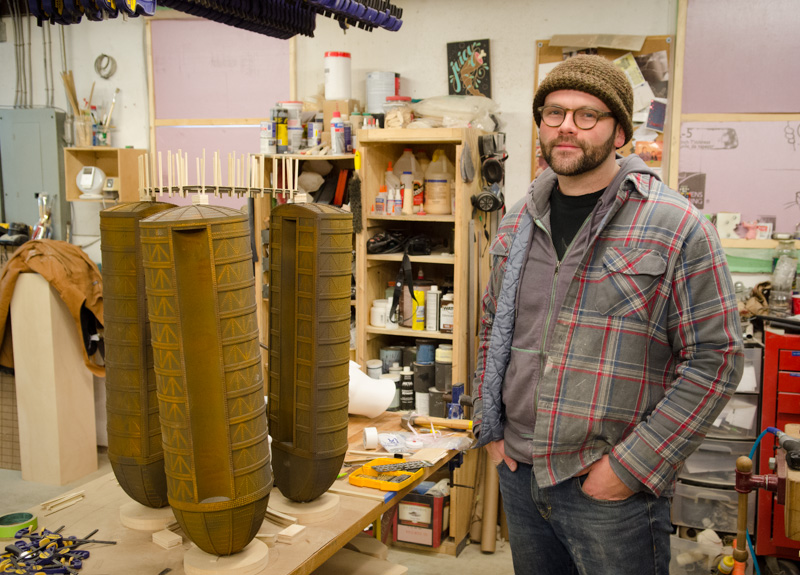Today we bid a fond, sad farewell to three of our resident artists. Micah Evans, Dustin Farnsworth, and Rachel Meginnes have been wonderful community members since arriving at Penland in 2012 and have continually inspired us with their work.
Micah, our resident in glass, will be heading to Austin, TX to set up a studio there and continue his work. During his residency, he made everything from glass topographic maps to yo-yos to involved decanters—all of them exquisite.
Dustin has spent his three-year residency focused on figurative sculpture, producing monumental narrative pieces that are both intricate and immersive. This fall, he will spend the semester at the University of Wisconsin-Madison as a Windgate Artist in Residence.
While at Penland, Rachel moved between painting and textiles, transforming plainwoven fabric into gorgeous and subtle studies of color, texture, and pattern. She is headed to Indiana to teach at Earlham College for the next year but will be back at Penland in fall 2016 to teach a concentration.
Best of luck to each of these three talented artists as they continue exploring new ideas in their work! We’re eager to see where those explorations take them, and we’ll always be eager to welcome them back to Penland.


